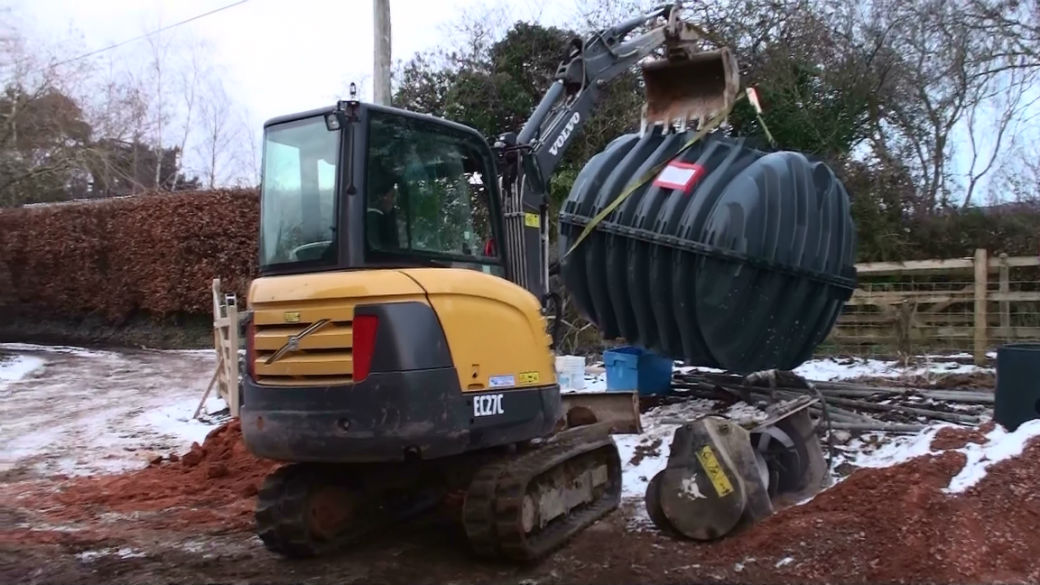Click any image to expand, use back to return
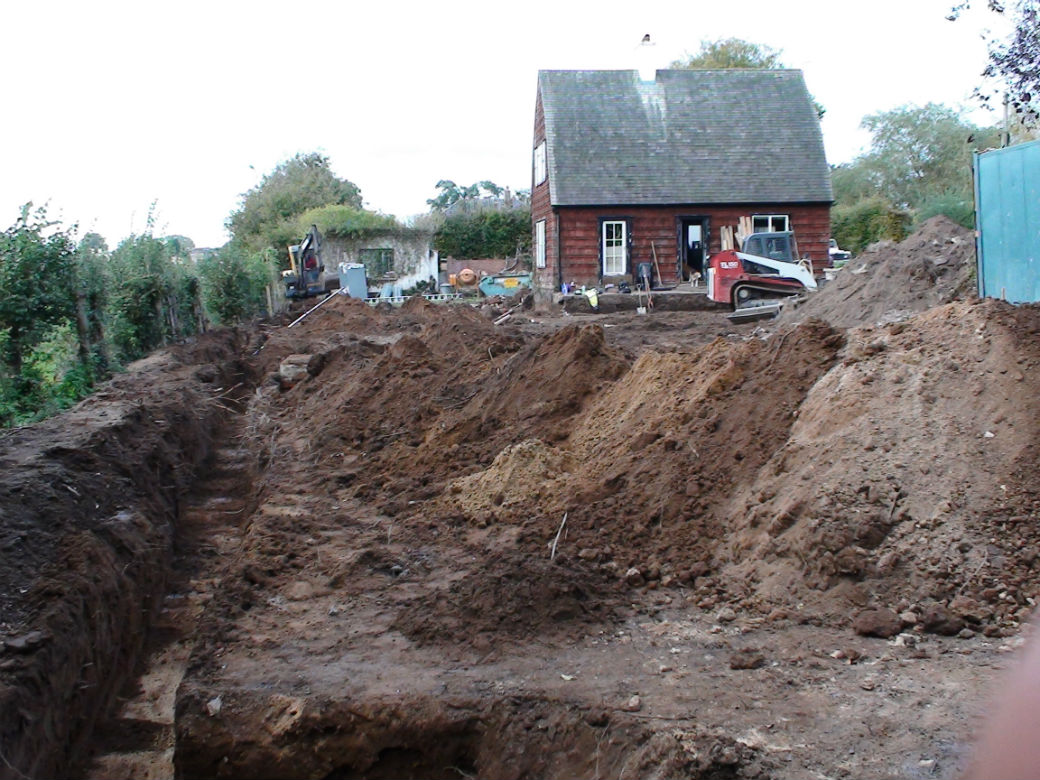
This the trench for the main drain from the house heading down to the new treatment plant.
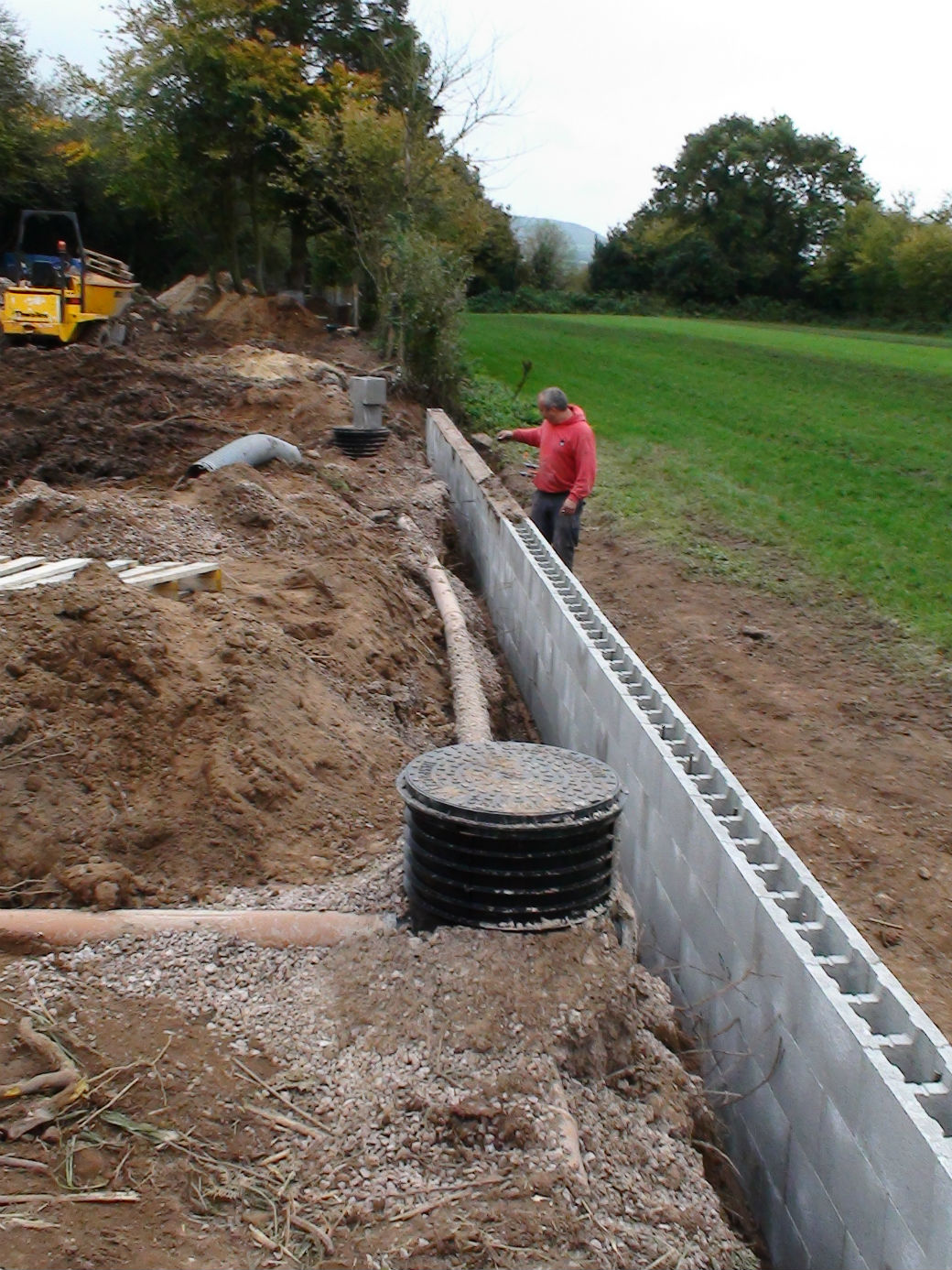
This concrete retaining wall is to prevent the drains plus the foundations and house from sliding into the farmer’s field off to the right!
This wall is currently hollow, but later it was filled with steel bars plus concrete.
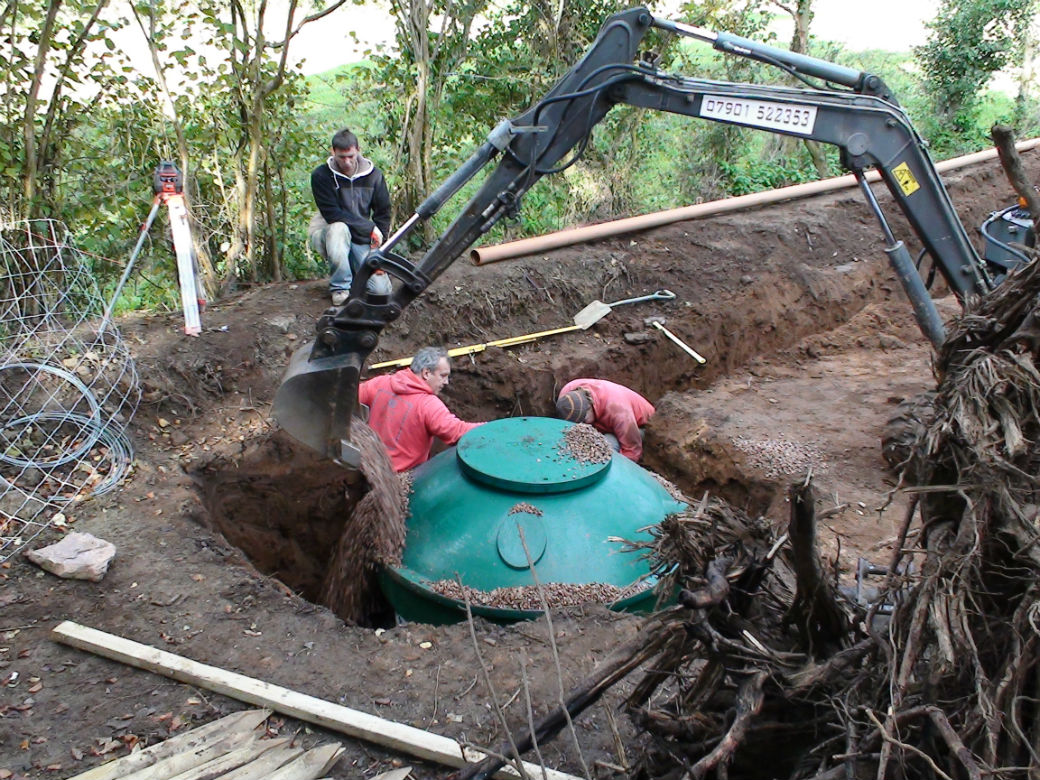
One of the first jobs was to put in the new foul water treatment plant, dig out the old septic tank and temporarily connect the new treatment plant to the old house – all that builders tea has to go somewhere!
Here the hole is being back filled with gravel. It will be capped off with concrete around the top to keep it from rising up due to bouyancy.
When in use air is blown through the contents and bacteria gobble up the goodies within!
The outflow of the tank goes into a large soak away buried around 3 metres underground.
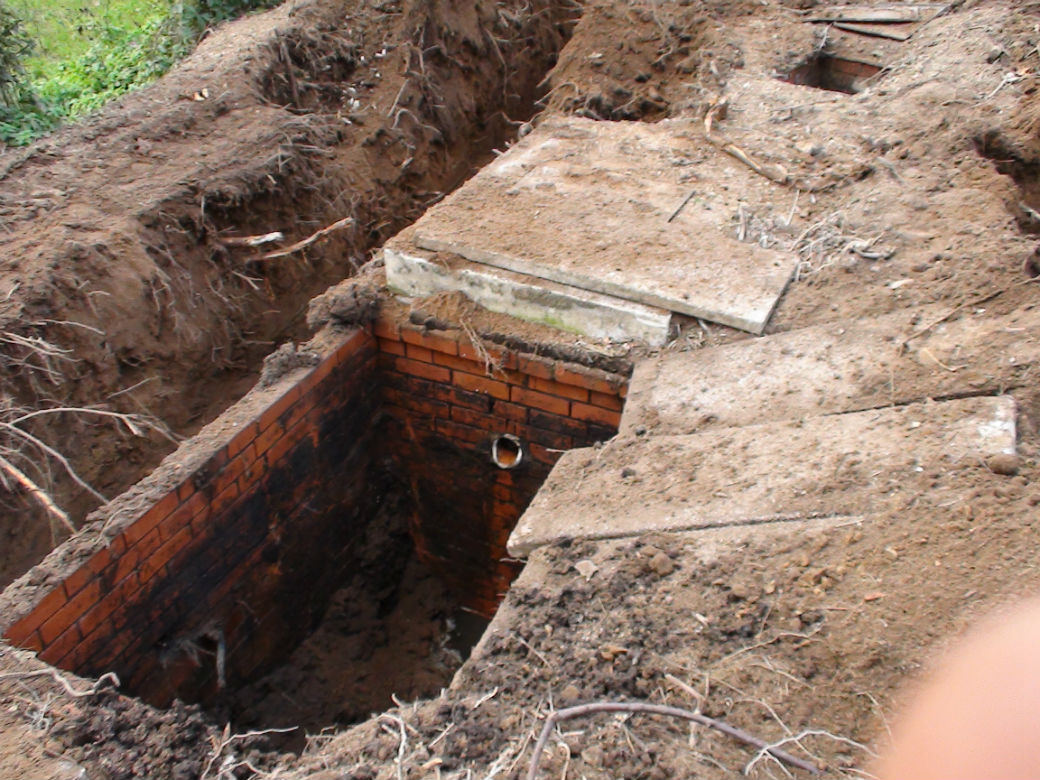
Above is the old brick and concrete septic tank. There are two chambers, the nearest has had its top broken off ready for the top and brick sides to be crunched up and removed. I decided not to illustrate the other full chamber!
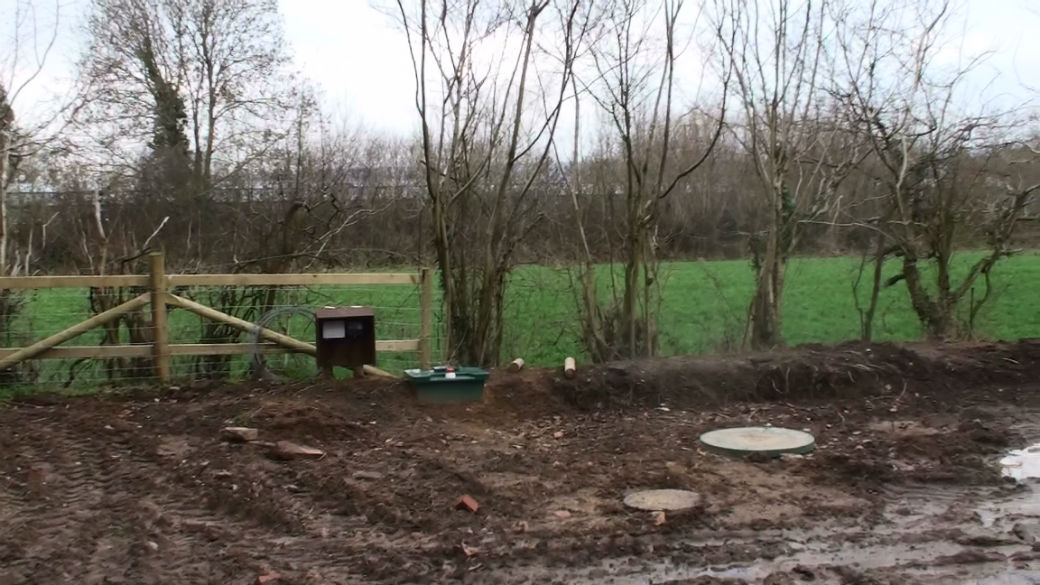
Now the waste water treatment tank is in the ground – circular green lid right rear. The effluent sampling chamber is the black lid front left of the tank lid. The green box in the background contains the external air pump.
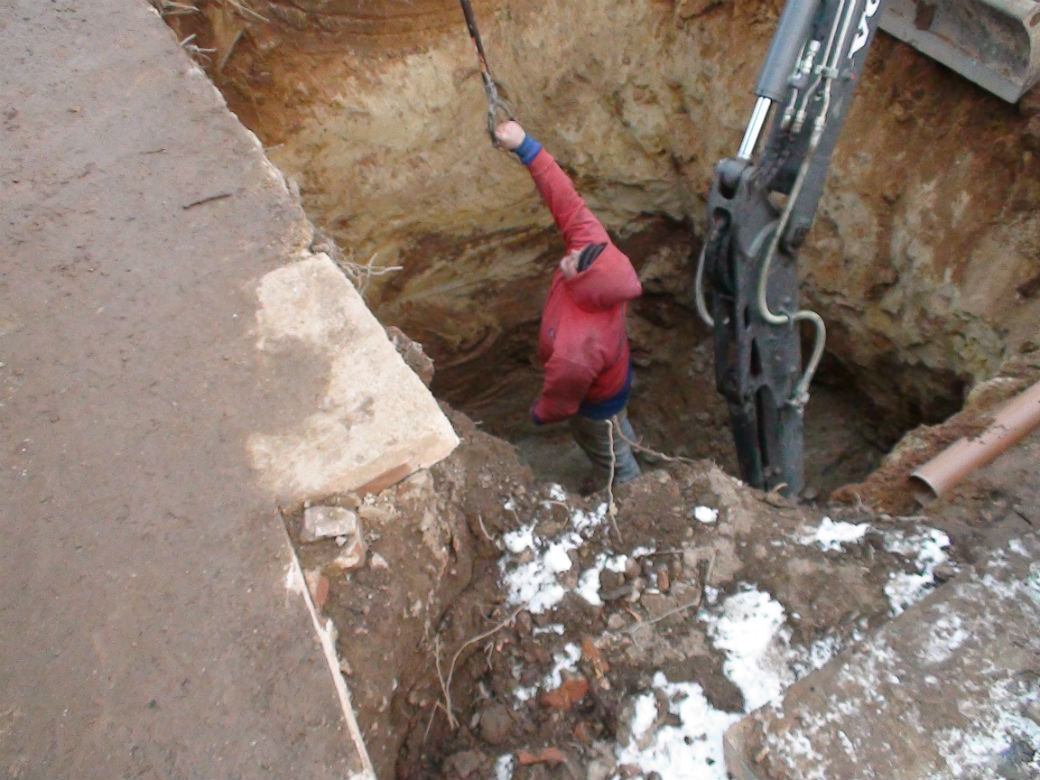
A very deep hole was needed for the 5000 litre rainwater tank.
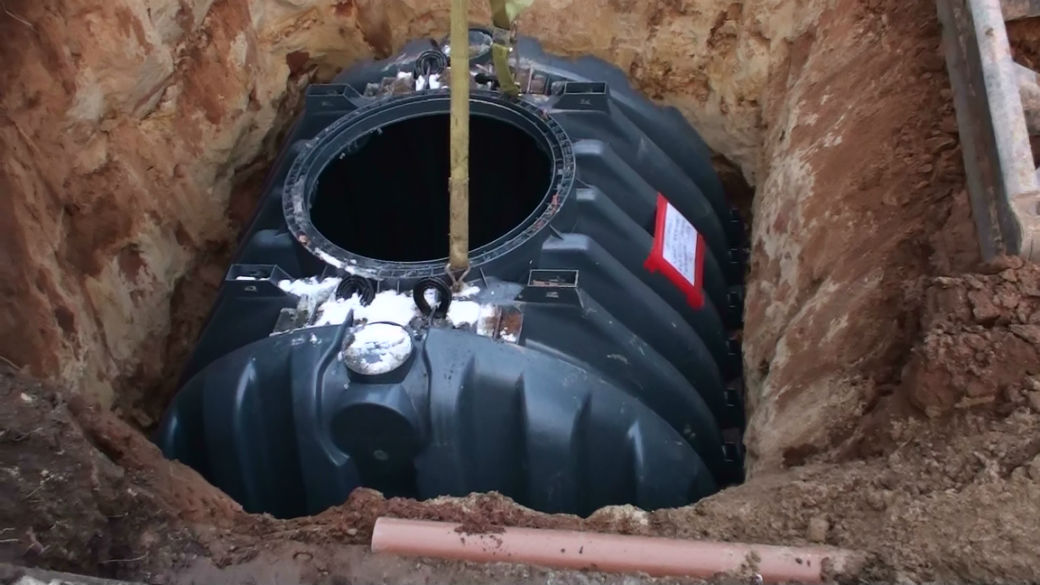
The rainwater tank installed – the orange pipe is the rainwater drain coming to the tank.
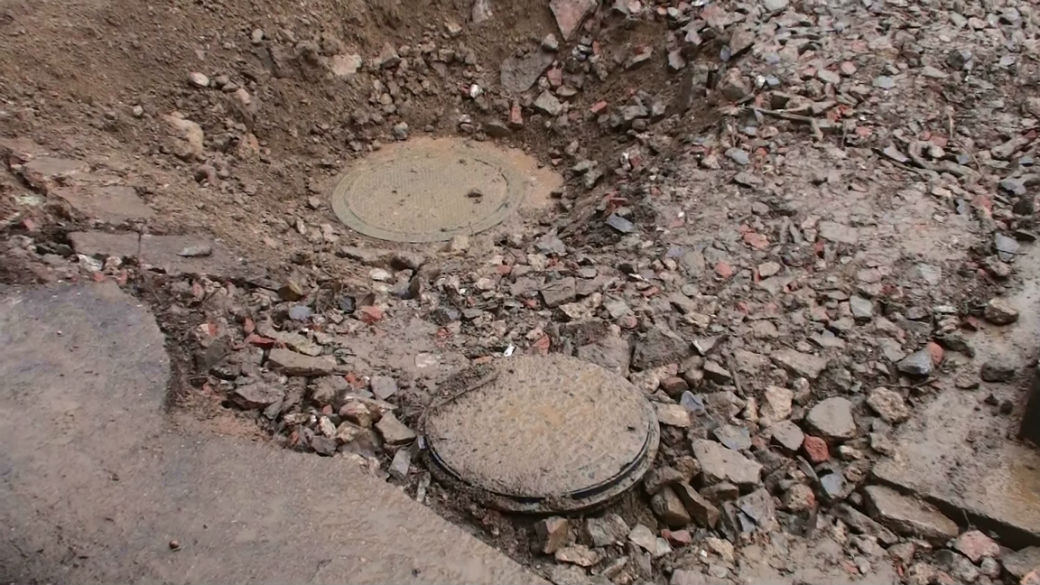
Now the tank with its turret and lid is buried – the black lid nearest is the rainwater drainage inspection chamber.
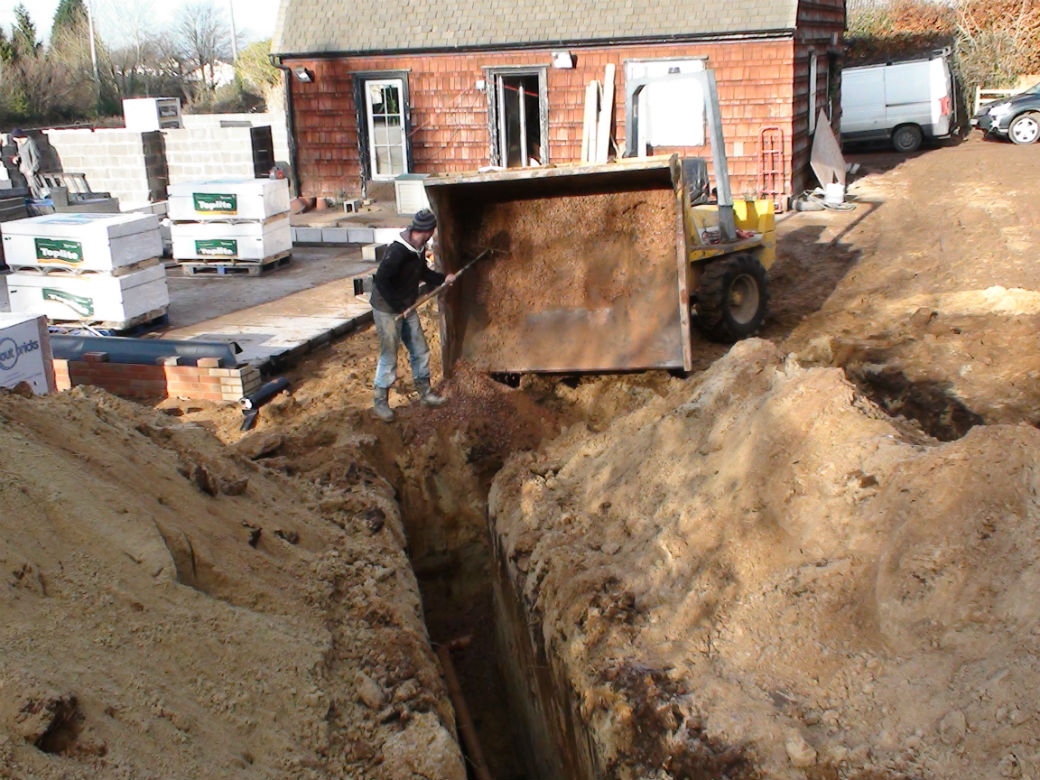
Here we are back filling the soak away for the excess rainwater with pea gravel. Then it is topped with geo-textile before back filling with soil.
You can just see the slotted orange pipe at the bottom of the rectangular trench to allow the excess rainwater to soak away.

